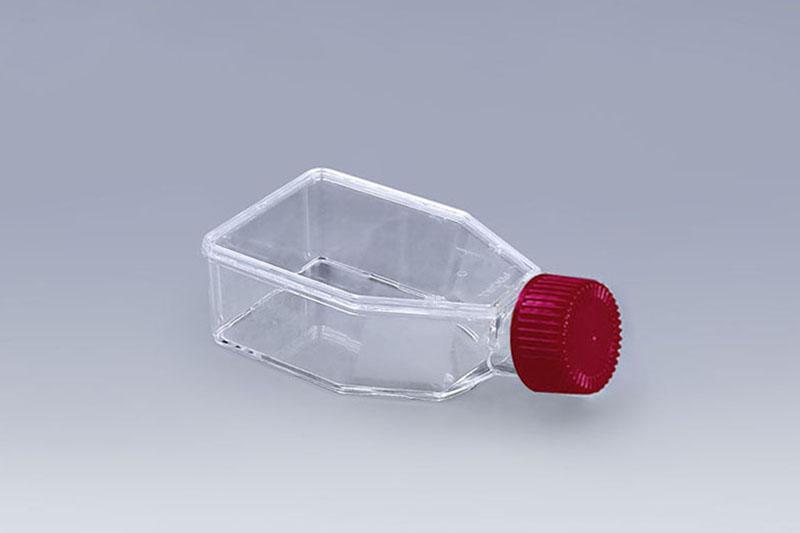The in vitro culture of cells requires a specific environment, such as sterility, suitable temperature, pH and certain nutritional conditions. The survival rate of cell inoculate is an important cell to measure the viability of cells, so how do we use cell culture flasks to detect this indicator?
Cell inoculate survival rate is also called cell attachment rate. It is the percentage value of cells that are made into a dispersed suspension and inoculated on the substrate at a low density (2-5 cells/cm2), adhere to the wall and can survive and grow to form a small group of cells (clones), used for Indicates cell viability and viability of cell populations. The basic steps are as follows:
T25 Cell Culture Flasks
(1) Take a pair of cells in the growth phase and make a cell suspension by digestion method. After counting, inoculate the cells in a cell culture flask (relatively higher concentration) according to the principle of inoculating cells for detecting cell growth curves. Inoculate 12 to 15 bottles.
(2) Take out a bottle of cells every 2 hours, pour off the culture medium, then add trypsin to digest the adherent cells, count the adherent cells, and use the following formula to calculate the adherence rate at each time one by one. Once every 2 hours, a total of 24 hours of observation that is 12. Inoculation survival rate % (adherence rate) = (number of adherent surviving cells/number of inoculated cells) × 100%.
Cell culture flasks are commonly used containers for adherent cell culture. Cell inoculation survival rate is only one aspect of measuring cell growth status. Others include clone formation rate, cell division index, etc., which can directly reflect the state of cells.
The FAI climbed 5.9 percent year-on-year in the first 11 months of 2018, quickening from the 5.7-percent growth in Jan-Oct, the National Bureau of Statistics (NBS) said Friday in an online statement.
The key indicator of investment, dubbed a major growth driver, hit the bottom in August and has since started to rebound steadily.
In the face of emerging economic challenges home and abroad, China has stepped up efforts to stabilize investment, in particular rolling out measures to motivate private investors and channel funds into infrastructure.
Friday's data showed private investment, accounting for more than 60 percent of the total FAI, expanded by a brisk 8.7 percent.
NBS spokesperson Mao Shengyong said funds into weak economic links registered rapid increases as investment in environmental protection and agriculture jumped 42 percent and 12.5 percent respectively, much faster than the average.
In breakdown, investment in high-tech and equipment manufacturing remained vigorous with 16.1-percent and 11.6-percent increases respectively in the first 11 months. Infrastructure investment gained 3.7 percent, staying flat. Investment in property development rose 9.7 percent, also unchanged.
 English
English



















































